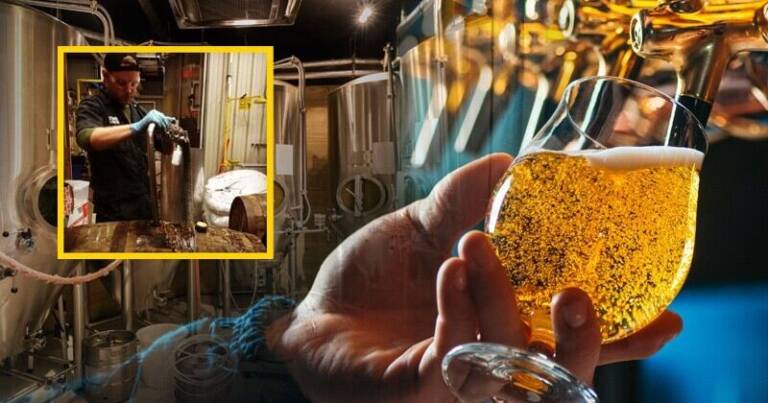Project Report For Beer Production
Introduction
Project Report For Beer Production is as Follows.
The labor-intensive process of producing one of the most adored alcoholic beverages on the planet is known as beer manufacturing. In a series of meticulously planned stages, materials are combined and certain methods are used to create a wide range of beer varieties with unique flavours, smells, and characteristics. The selection of top-notch ingredients is the first step in the procedure. Water, malted barley, hops, and yeast make up the majority of the mixture.
The final flavour of the beer is greatly influenced by the water, which is frequently obtained from natural springs or other cleansed sources. Hops add bitterness, fragrance, and flavour, while malted barley supplies the fermentable carbohydrates required for fermentation. In the process of fermenting glucose into alcohol and carbon dioxide, yeast is essential.
Malting is the initial process in the manufacturing of beer, in which barley is steeped in water, germinated, and then dried. This process causes enzymes in the barley to be activated, converting starches into fermentable sugars. The dry malt is next processed into grist, a coarse flour. The grain is then combined with boiling water in a process known as mashing.
This produces mash, which allows the enzymes in the malt to break down the starches into sugars. The wort-like liquid that results is separated from the solid grain particles. The wort is then boiled, and hops are added at regular intervals. Hops add bitterness to balance the malt’s sweetness, as well as scents and flavours. The wort is immediately cooled after boiling to prepare it for fermentation.
Fermentation is an important stage in which yeast is added to cooled wort. The carbohydrates in the wort are consumed by yeast, which produces alcohol and carbon dioxide as byproducts. This first fermentation occurs in huge fermentation tanks and can last anywhere from a few days to several weeks, depending on the beer style and desired qualities.
Following fermentation, the beer goes through a secondary conditioning phase to settle any leftover yeast and sediment. This aids in the clarification and development of the beer’s flavours. Some beers may go through further maturation, such as barrel ageing or tank conditioning.

Types Of Beer Production
Ales: Ales are beers made using top-fermenting yeast strains during a warm fermentation procedure. They feature a flavour characteristic that is fruity, strong, and rich. Pale Ale, India Pale Ale (IPA), Porter, Stout, and Belgian Ales are examples of ale styles.
Lagers: Lagers are beers made by a cold fermentation procedure employing bottom-fermenting yeast strains. They are well-known for having a clean, crisp, and smooth flavour. Pilsner, Helles, Bock, Märzen, and Dunkel are examples of lager styles.
Wheat Beers: Wheat beers are brewed with a high percentage of wheat, which contributes to its hazy look and creamy texture. Hefeweizen, Witbier, and Berliner Weisse are examples of this style.
Non-Alcoholic Beers: Non-alcoholic or low-alcohol beers are produced with a low alcohol level, making them ideal for people who choose to avoid or restrict their alcohol use. These beers go through a special manufacturing procedure that reduces the alcohol concentration while keeping the flavour.
Market Potential Of Beer Production
The worldwide beer market was worth USD 743.84 billion in 2020 and is expected to increase at a CAGR of 3.68% between 2021 and 2028, from USD 768.17 billion in 2021 to USD 989.48 billion in 2028.
The number of breweries has increased significantly in recent years. As the number of alcoholic beverage drinkers grows, so does the demand for a variety of flavours. Consumers are constantly looking for new flavours in beers to expand their beer palate. As there are many well-established worldwide competitors in the industry, players from countries such as the Czech Republic, Mexico, Costa Rica, Argentina, Chile, India, and the Caribbean are extending their product portfolios to offer new products to consumers.
As the number of local companies grows, so does the demand for new breweries, thus market participants are focusing on partnering or opening their own breweries in other international countries to make their products available in those areas. The growing popularity of local beers is resulting in an increase in the number of breweries, which is likely to boost the beer industry during the projection period.
Project Report Sample On Beer Production
Need Help?
Create 100% Bankable Project Report
